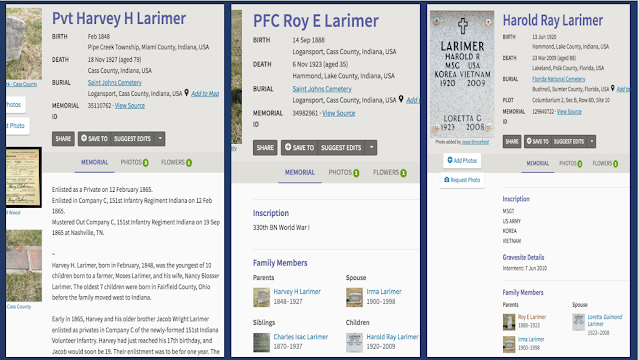My heart holds a special place for ancestors who had no descendants. I try to research and memorialize them so their names and lives aren't forgotten.
This is the case with my paternal great aunt Nellie Block, born in Gargzdai, Lithuania (?-1950). She was the oldest sister of my grandfather Isaac Burk (1882-1943). It wasn't until I connected with second cousins a few years ago that I could even put a name to the face I found in my parents' wedding album and elsewhere.
Cousins said they remember great aunt Nellie as kind and attentive, someone who enjoyed family gatherings. In the photo above, she is the elegantly-attired lady in lace, standing between a younger brother on one side and a younger sister on the other.
Single or widowed?
For a long time, I thought Nellie was a maiden aunt. More than a decade of research had only turned up a Census where she was recorded as S (single). In fact, she wasn't coming up in my repeated searches of US Census documents from 1920, 1930, and 1940, even when I searched on multiple sites (because each indexes the Census in its own way).
A couple of years ago, I was able to obtain Nellie's death certificate. The informant was her brother, who said Nellie was widowed. That was news.
In April of this year, I found Nellie enumerated in the 1950 US Census, where she was shown as...widowed! Two sources said she was widowed. Hmm.
Curiously, Nellie Block's 1950 US Census entry and her death cert both refer to her surname as Block, with no married name ever mentioned. Even in the 1930s, when an English cousin invited Nellie to a wedding, she addressed the invite to "Nellie Block."
But searching for years, I found no indication of any marriage.
My secret weapon
Just the other day, one of my cousins asked about Nellie. We compare notes about brick walls from time to time, and he remembered Nellie as one of mine.
Because of his gentle nudge, I redid my search for Nellie. Lo and behold, up came a record transcription for a 1916 marriage to Samuel Kaplan in Manhattan, NY, in April of 1916, along with the cert number. There are a LOT of Nellie Block marriages in search results, but now I have a secret weapon to dig deeper into Big Apple records.
Since early this year, the New York City Municipal Archives has offered FREE access to digitized vital records from roughly the late 19th century to the Depression era. You should first try to find the cert number, borough, and year, otherwise you'll be browsing till the cows come home.
Because the actual digitized records are free to view, I had nothing to lose by searching for the Block-Kaplan marriage cert. I input the details and up came a pdf. I wanted to view the cert with my own eyes, not rely on the transcribed info.
My Nellie?
Reading the cert, I saw Nellie listed as single, 30 years old, born in Russia, her first marriage. Samuel Kaplan was 38, widowed, a jeweler born in Russia, son of Isaac Kaplan and Sarah Freedman, being married for the second time.
I never heard of Samuel Kaplan, but it only took a moment to determine this was my Nellie's marriage cert. First, the mother's name was very close to what she said on other documents. Second, the father's name was a family surname I know.
The clincher was the place where the ceremony took place: 7 East 105th Street in Manhattan. That's the apartment building where Nellie's sister-in-law lived. My Nellie!
Next step
I've just sent $18 to the NYC Municipal Archives to obtain the three documents related to Nellie's wedding: the marriage license application, affidavit executed by bride and groom, and actual marriage license original. You can learn more about how this works via the FAQs here.
Although I may have to wait a few weeks, I'll get lots more info on Nellie and her husband, especially from the affidavit. I hope to trace the life of Samuel Kaplan, who seems to have died before the 1950 US Census was taken.
So never give up! New records become available all the time and database indexing improves all the time. In this case, the bonus secret weapon of free NYC vital records helped me across the finish line for this breakthrough, confirming that my great aunt Nellie Block had, indeed, been married.




































